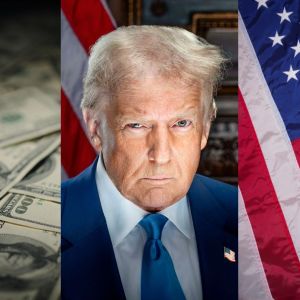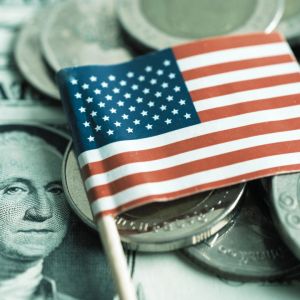Trump’s tariff shock has lowered consumer sentiment and GDP in Q1
3 min read
President Donald Trump says his second White House term is off to the best start in U.S. history. Fresh economic figures tell a different story. Gross domestic product slid in the January‑to‑March quarter, the first contraction in three years. Economists blame a wave of imports ordered before new tariffs took effect. Beyond that, hiring continues, and inflation has cooled after last year’s jump. Surveys of household confidence, business investment plans and expectations for sales, employment and growth have dropped sharply. Analysts say the main culprit is the tariff fight that the president launched against trading partners around the world. Current financial markets reflect the tension. U.S. shares are posting the weakest return at this point of any modern presidency, and the dollar’s value has sunk further than it did under George W. Bush, Barack Obama, or Joe Biden. Voters who backed Trump largely for his economic message have begun to question that record. Trump promised to close trade gaps using import taxes Throughout the campaign and his first term, Trump promised to use import taxes to close trade gaps, lift government revenue, and bring factory jobs back to American soil. The tariffs imposed since early April represent the biggest barrier to foreign goods in more than a hundred years, even after the administration paused some of the duties announced on April 2. Those reversals, plus warnings of more levies to come, have left companies at home and abroad guessing about rules that can change overnight. Bloomberg Economics’ index of global trade uncertainty now stands well above its level during the first‑term trade clash. Trump often cites the merchandise trade deficit, built up over five decades, as proof that the United States is “getting ripped off.” Yet the first effect of the new levies was a flood of imports. Corporations rushed ahead to dodge higher prices, and the monthly trade gap hit a record at the start of 2025. That import surge was large enough to subtract from GDP and tip the economy into the first‑quarter decline. Hiring has continued in Q1 2025 Hiring continued in the opening months of the year. Employers added 456,000 positions from January through March, topping forecasters’ estimates, and the jobless rate edged up slightly. “GREAT JOB NUMBERS, FAR BETTER THAN EXPECTED. IT’S ALREADY WORKING,” Trump wrote on social media on April 4, the day the March report appeared. Yet the forward‑looking data again diverge from the historical counts. Most private‑sector economists argue that higher import duties will lift costs for foreign and domestic products alike, feeding faster inflation. Surveys show that consumers think so too: expectations for both one‑year and five‑year price increases have risen sharply. Retailers saw a burst of spending at the end of last year and into the winter as shoppers grabbed cars, computers and other big‑ticket goods before tariffs drove up sticker prices. Now, with households bracing for steeper costs and slower growth, multiple gauges of consumer sentiment have fallen to levels last seen during the 2020 pandemic slump. Corporate leaders are equally wary. Industry polls find capital‑spending plans at their lowest level in more than two years, even though firms hold historically large cash cushions. Executives say that without clear tariff rules they cannot predict costs or map out global supply chains, so equipment orders are on hold. Cryptopolitan Academy: Tired of market swings? Learn how DeFi can help you build steady passive income. Register Now

Source: Cryptopolitan



